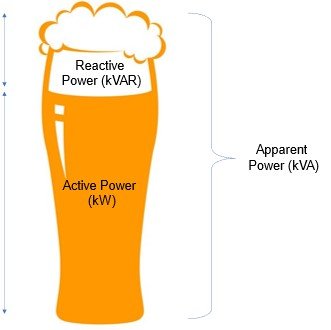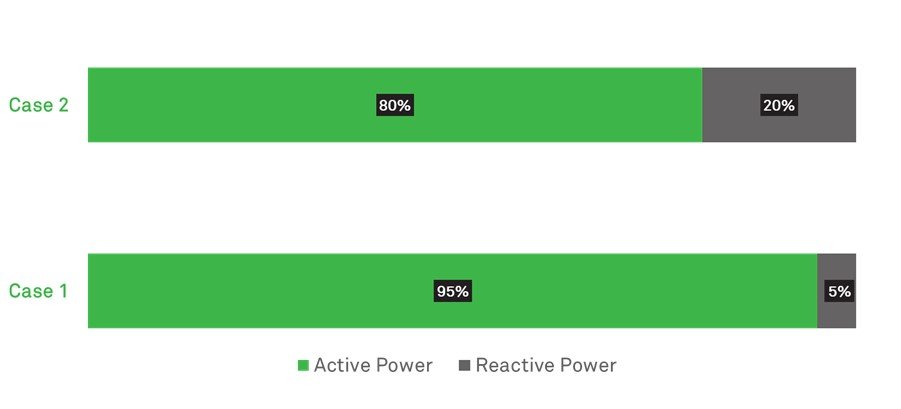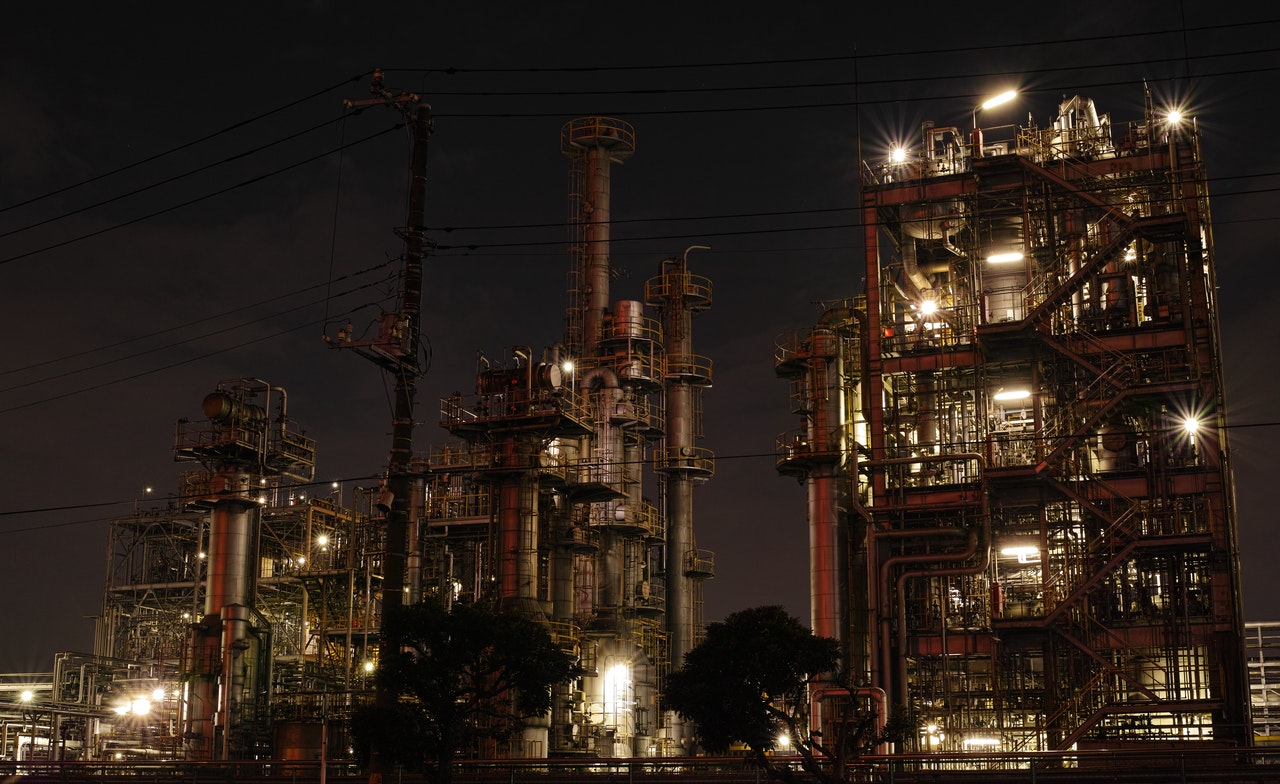Poor Power Factor? The Triangle of Electrical Efficiency
Electrical devices like fans, washing machines, or anything that has a motor inside it are the ones contributing to a low power factor. These devices require electricity to produce mechanical energy and the energy losses in the process make them consume more power to give the required output.
In simple words, when we buy a glass of beer, often we get a beer along with the foam in the glass. We prefer the glass to have more beer and less foam to get fair value for the money we spend on it. Similarly, in a crisps packet, the crisps we eat represent real power. The air (nitrogen) in the packet represents the reactive power. We however pay for the entire packet, even though we consume only some portion of it. The ratio of the beer against the foam and crisps against the air is the power factor (PF).

What is Power Factor?
The power factor is a measure of efficiency; it is an important parameter that defines how efficiently electrical power is being utilized by an asset. Any equipment that uses electric energy to give an output, will have energy losses. The various losses are in form of heat, mechanical wear, and tear, impedance loss, inductive loss, etc. All these losses mean that input energy is not equal to output energy. Power factor is a measurement of how much electrical losses occur in a given system without affecting the input side too much or shall we say without shutting down the system. For example, a power factor of 0.72 would mean only 72% of the power is being used for useful work.
It is a measure of true or real power (kW) to apparent power (kVA) and its values range from 0 to 1, where 1 equals 100% efficiency.
What Causes Low Power Factor?
To get an idea of what causes low power factor, it is necessary to have a basic understanding of the type of loads. In nature, there are three types of electrical loads which are known to affect power factors.

Note: Capacitive loads have electrostatic potential energy
- Inductive loads are the sources of reactive power.
- Resistive loads are the sources of active power.
- Capacitive load is similar to that of inductive load, the only difference is that in capacitive load current leads the voltage, whereas in inductive load current lags behind the voltage.
In short, any device which requires mechanical energy to operate often leads to a lower power factor as electric input is lost in the form of mechanical losses. Hence inductive loads lead to lower power factors, some common examples include electric/induction motors, transformers, ceiling fans, refrigerators, and A/Cs, among others.
Why is it Important to Correct the Power Factor?
Power factor correction has several positive impacts on your electrical system and equipment. It increases the overall efficiency of your business and saves money overall, a win-win for you and the planet. The distinct reasons that make it necessary for you to correct your power factor are
- Related to Operations
a. Increased power losses and operational expenses:
A low power factor means low operating efficiency. These increase the expenses and capital investment of a business. The differing power factor values of 95% and 80%, will have a considerable impact on the amount of energy consumed. The second one will need to draw more power from the electricity grid to provide the same power, which will result in higher utility bills.

b. Impact on asset life
Low power factor causes higher current flow through the circuit which increases the voltage drop in the conductor, in turn reducing power efficiency. Drawing higher current generates excessive heat which shortens equipment life. Increased reactive loads also damage equipment sensitive to reduced voltage.
2. Business Impact
Contract Demand Penalty by DISCOMs (Utility)
Electricity providers charge heavy fines if the power factor of a consumer drops below 0.85 in India. Energy losses in power lines and transformers increase when there is a low power factor. These costs are included in the electricity bill in the form of a power factor penalty.
Racanaa collects insights in the most granular way by tracking electricity consumption on asset level and lets it customers to monitor the power factor of various connected assets as well as for the whole facility. This enables the customers to shift from reactive maintenance to proactive actions.
Racanaa Energy’s proprietary hardware & software services use Energy Intelligence & Automation to give businesses transparency, a detailed insight, and complete authority on their operations. Besides being self-starters on their energy efficiency, they would improve their revenue/unit of energy consumed, optimize, and automate their resources & SOPs (Standard Operating Processes) which leads to reduced energy usage and a lower carbon footprint. This is in direct conjunction with global sustainability and ESG (Environmental Social & Governance) compliance standards at a corporate level.






